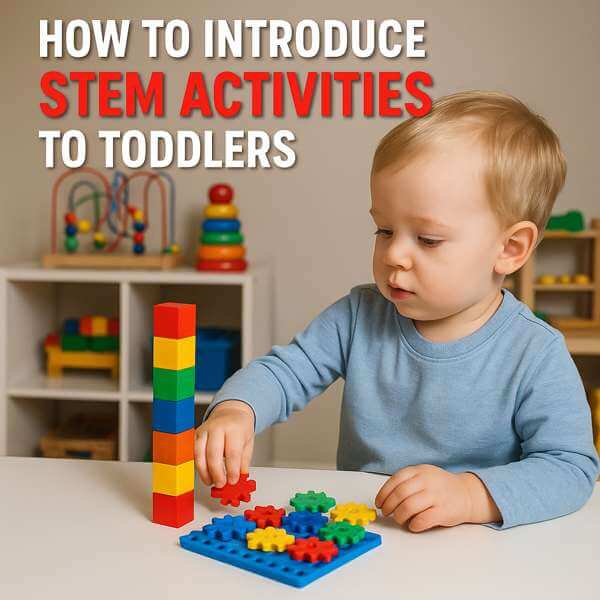How to Create a Montessori-Inspired Learning Space at Home
Creating a Montessori-inspired learning space at home can be a fun and rewarding project. Montessori education focuses on independence, freedom within limits, and respect for a child’s natural development. This approach is known for its ability to foster creativity, problem-solving skills, and a love of learning in children. By setting up a Montessori space at home, parents can support their children’s growth and learning outside of school. This article will guide you through the process of creating an effective Montessori environment at home, using simple steps and ideas.
Understanding Montessori Principles
![]()
The Montessori method is named after Dr. Maria Montessori. She was an Italian physician and educator.
This method emphasizes hands-on learning. Children learn by doing activities that interest them.
- Independence: Kids make choices about their learning.
- Freedom within Limits: They have freedom but with some rules.
- Respect for the Child: Respect each child’s pace and interests.
Parents can use these principles at home. It helps children explore and learn naturally.
Montessori spaces are orderly. This order helps kids focus better.
By understanding these principles, parents can create suitable environments at home.
Choosing the Right Space at Home
![]()
First, find a good spot at home. It should be quiet and calm.
A corner of the living room or a separate room works well.
Natural light is important. A sunny spot is ideal for reading and playing.
- Make sure it is safe for children.
- Keep it away from distractions like TVs.
- Choose a place easy for kids to reach.
It doesn’t need to be large. Small spaces work if organized well.
A dedicated space helps children know where to go for learning.
Selecting Appropriate Furniture and Materials
![]()
Furniture should be kid-friendly. Choose low shelves and small tables.
Children should be able to reach everything easily.
- Low bookshelves for storing books and toys.
- A small table and chair for crafts and writing.
- Rugs or mats for floor activities.
Use natural materials like wood. They are durable and safe.
Keep the area tidy. This teaches kids responsibility and care.
Rotate toys and materials to keep the space interesting.
Organizing Learning Materials Effectively
![]()
Organized materials promote independent learning.
Label baskets and boxes. Pictures help younger kids identify contents.
- Group items by category: art supplies, puzzles, books.
- Place frequently used items at eye level.
- Store seasonal or less-used items in higher places.
Clear labels help children put things back in place.
Encourage kids to clean up after themselves.
A tidy space makes it easier to concentrate.
Incorporating Nature into the Learning Space
![]()
Nature is a big part of Montessori education.
Include plants, flowers, or nature-themed decorations.
- Small indoor plants teach responsibility.
- Nature-themed books and posters inspire curiosity.
- Access to outdoor views when possible.
Gardening tools can be part of the learning materials.
Nature walks can supplement indoor learning.
Connecting with nature fosters calmness and awareness.
Encouraging Independence in the Space
![]()
Independence is key in Montessori learning.
Create opportunities for self-directed play and learning.
- Provide choices in activities.
- Allow kids to set their own pace.
- Encourage problem-solving and decision-making.
Be patient and offer gentle guidance.
Praise efforts and progress, not just results.
Children gain confidence as they learn to do things themselves.
Using Real-Life Activities for Learning
![]()
Real-life activities teach practical skills.
Include tasks like cooking, cleaning, or gardening.
- Cooking helps with math (measuring ingredients).
- Cleaning teaches organization and responsibility.
- Gardening connects them to nature.
These activities make learning relevant and fun.
Children feel valued when contributing to the household.
Real-life experiences enhance academic learning.
Implementing Technology Thoughtfully
![]()
Technology can be part of a Montessori space.
Use it wisely to support learning goals.
- Educational apps and games can be helpful.
- Limit screen time to ensure balance.
- Choose age-appropriate content.
Encourage interaction with both digital and physical materials.
Teach kids about responsible technology use.
Balance tech with traditional learning for best results.
Conclusion: How to Create a Montessori-Inspired Learning Space at Home
![]()
Setting up a Montessori-inspired learning space at home is rewarding.
Remember the key principles: independence, order, and respect.
- Choose a calm and orderly space.
- Use kid-friendly furniture and materials.
- Integrate nature and real-life activities.
With thoughtful planning, children can enjoy learning at home.
This space can nurture their curiosity and independence.
Most importantly, it supports their natural desire to learn and grow.





